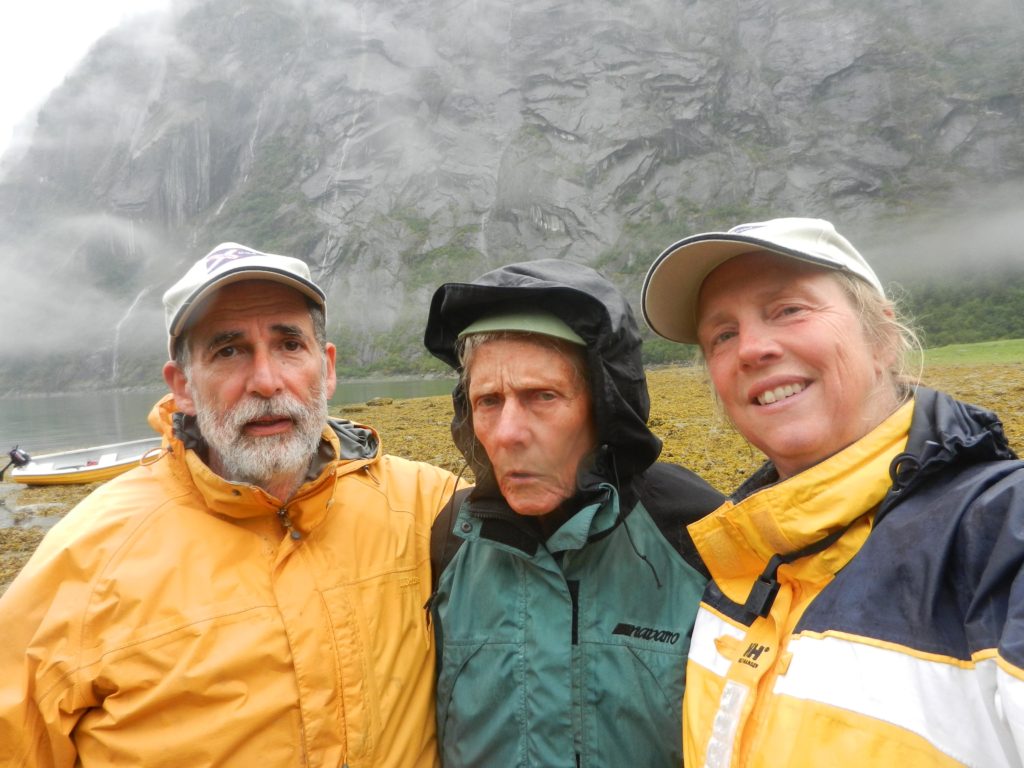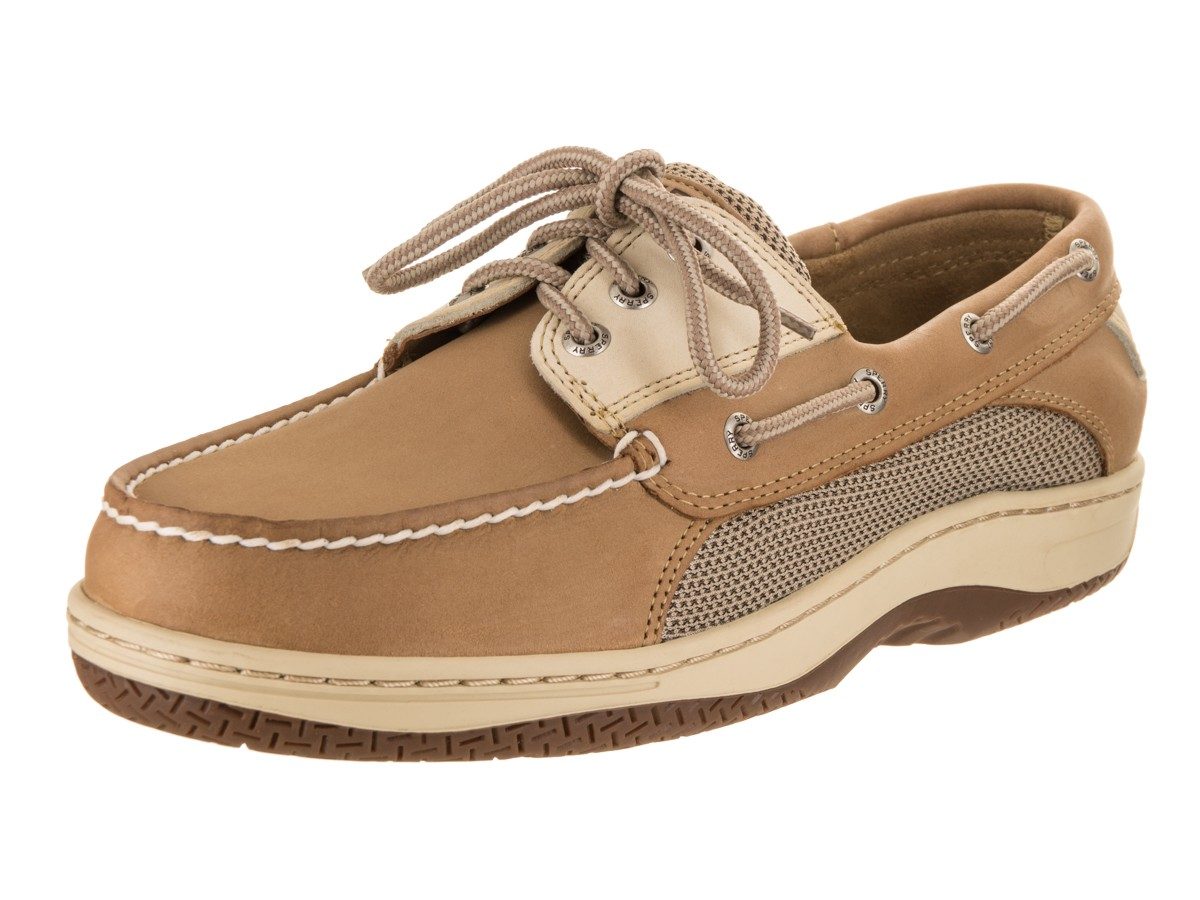Working here in Atlanta, getting things done, means that posts go out well after they have been started, followed by a flurry of posts. Sorry for the delay.
Decatur, GA, 6-FEB-2019 – Last week, a cruiser’s forum email asked about suitable clothing for cruisers.
‘‘Anyone found any sailing-themed fun clothing at a reasonable price point not made from cheap tourist tee shirt material (like all the ones on Etsy)?’’
The answers went from helpful to great derision, including the notion that cruisers don’t wear clothing. (I’ve heard of this in places where it is warm enough that body parts won’t fall off in the early morning air.)
Of course, this starts one thinking about clothing.
When we left Caro Babbo a few weeks ago, Jennifer and I discussed whether I should take deck shoes with me. They are light, take up little space in a bag, and have no metal, so they can be easily worn through airport security.
Wearing them on cement quickly wears down the soles, which are soft and designed for a boat deck.
Our first week on the east coast took me to a professional conference in Delray Beach, Florida.
For business, I’ve always worn a sincere-blue suit, starched shirt, Hermés tie, cap-toed shoes and cuff links on french cuffs. These clothes gives me creds and gravitas. I’ve been taken for a lawyer, doctor, and movie producer, among other things; when dressed more casually, as a food writer, art critic and mechanical engineer.*
For this trip, I skipped both the deck shoes and the suit. I took a pair of green sneakers with bright pink laces, a black pair of Church cap-toed shoes, two pair of cotton trousers and a few shirts and sweaters, plus a black leather jacket, scarf and toque (in the Canadian sense of the word).
Clothes communicate, ‘‘the clothes makes the (wo)man.’’
I once traveled with a Porter-Cable router on MARTA to the airport. A man dressed in camouflage work clothes smiled with satisfaction when he spotted the router case, and then confusion when he saw me in a suit carrying it.

To work on houses, boats or cars, I wear Dickey fisher-stripe, long-sleeve coveralls that admit me to the fraternity of blue collar working people. Standing next to Jennifer’s 2004 Honda, while Jennifer, as boss-lady, talks to a tenant, men will come over to tell that it’s good to see a working man, and talk to me as a peer about what they do and the current projects they’re working on.
At the conference, wearing cap-toed shoes, I could see the shoes of my fellow attendees under the tables: deck shoes and loafers. By having neither, was I out of that fraternity? Richard and Martha sitting next to me both wore sneakers, but they’re too cool for cats. I wore my sneakers for dinner each evening.
I often think I sail in just the clothing I normally wear, street clothing. But I don’t.
On the first day of our trip, we drove to Fort Pierce to see Kimberly and Jeff aboard Pegu Club. Kimberly wore a Columbia-brand jacket.
When sailing, Jennifer and I wear Xtratuf boots, when the weather requires, along with Helly Hansen foul weather trousers and a Helly Hansen jacket for Jennifer and an LL Bean jacket for me. These clothes, collectively, are called foulies.
Underneath, we’re wearing a layer of skiing long johns, trousers and a couple of sweaters. Under our jackets we wear foam life vests, which provide an inch of foam insulation – In Alaska, the real purpose of a life jacket is to recover your body.†

Do we look like sailors dressed like this? To other sailors we do. Xtratufs are known as ‘‘Alaska Sneakers’’ and make us think we look like we’re from the area.‡ The foul weather gear, in places like Prince Rupert, merely make us look like we are dressed appropriately for the local weather.
Clothing like everything on a boat can be expensive. The potential price of fashionable, fun marine clothing boggles the mind.
A boat will eat as much money as one has, no matter how much that may be.
Kimberly and Jeff bought their boat Pegu for $15K USD and the spent another $55K outfitting her (including $25,000 to re-power her.)
Getting our houses ready for sale, we’ve found costs us something around $30K each for labor. Doing it ourselves, we’ve figured, will take us about six months per house… about 2-½ years to get all five done. A quick, back of the envelope calculations says that sailing now costs about $150,000 dollars in lost income versus staying put for 2-½ more years. Once upon a time, this was called ‘‘opportunity cost.’’
So we sail now.
I’ve been forced by financial planning take a clear-eyed look at my life expectancy. I’m three-quarters of the way through. Money and fashion mean less, doing things means much more.
*I’m a software engineer by profession and training, while I have been assumed to be many things, the only time I entered into a software conversation on an airplane, the man I was speaking with asked ‘‘how do you know about this?’’
† There are many places where the water gets to 55ºF. Our friend, Lonnie Hill, spent six hours in 55-degree water pulling a raft with her children aboard to shore, she told us recently.
‡ If we were from the area, people would know us, no matter how we are dressed.







you looked great at brunch in Vero Beach!
Clearance racks are usually my clothing style. I love Halley Hansen clothing and they have a factory outlet not far from us with up to 60% off (Including some fantastic wet weather gear last month)!
I have recently discovered clothing with elastic woven into the fabric and what a difference it makes on the yacht. No more being restricted by the crotch when peforming boat yoga.
We may not wear a unifrom but usually boat shoes and a weather beaten face is what gives a sailors identity away.
Cheers
Drew,
I had no idea they had an outlet store.
I see you’re in Oz, I’ll look into whether there might be one in the Pacific Northwest.
Thank you for your comment.
Interesting topic. Being a fellow software developer (“oxymoron” = “software” + “engineer”;), I’ve had some flexibility in my wardrobe. Some places, like Apple back in the day, seemed happy that you just had pants and a shirt on.
I once lived near a Patagonia outlet that saw a lot of my business and consequently my wardrobe took on their aesthetic. When I moved to Portland, OR we lived near a Columbia outlet so my wardrobe gradually changed over in their direction. In both cases all was good with the local vibe.
We now live aboard in Pacific Mexico and it’s challenging to fit in with the locals. It’s winter down here now but seems hot to my PNW sensibilities. No local wears shorts and the sight of a jacket is not uncommon! I can only hope acclimation may one day allow me to wear similar attire.